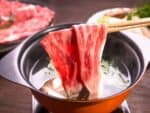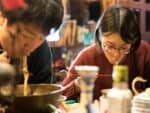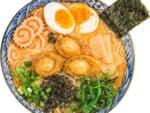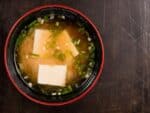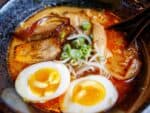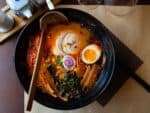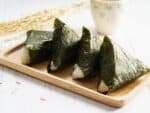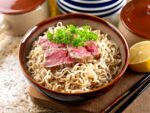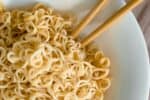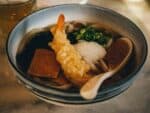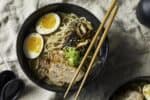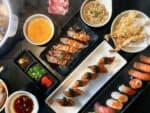If you’ve ever been to a bar in Japan to order food and drinks it might take you by surprise when your waiter brings Japanese appetizers at the start of your visit. This small dish is something you didn’t order and even more surprising, you’ve been charged for it!
Otoshi is a custom in restaurants and Japanese style pubs (known as Izakaya). A small appetizer will be served as you sit down, or with your first round of drinks. It is usually something easy to make but what you get will depend on where you are.
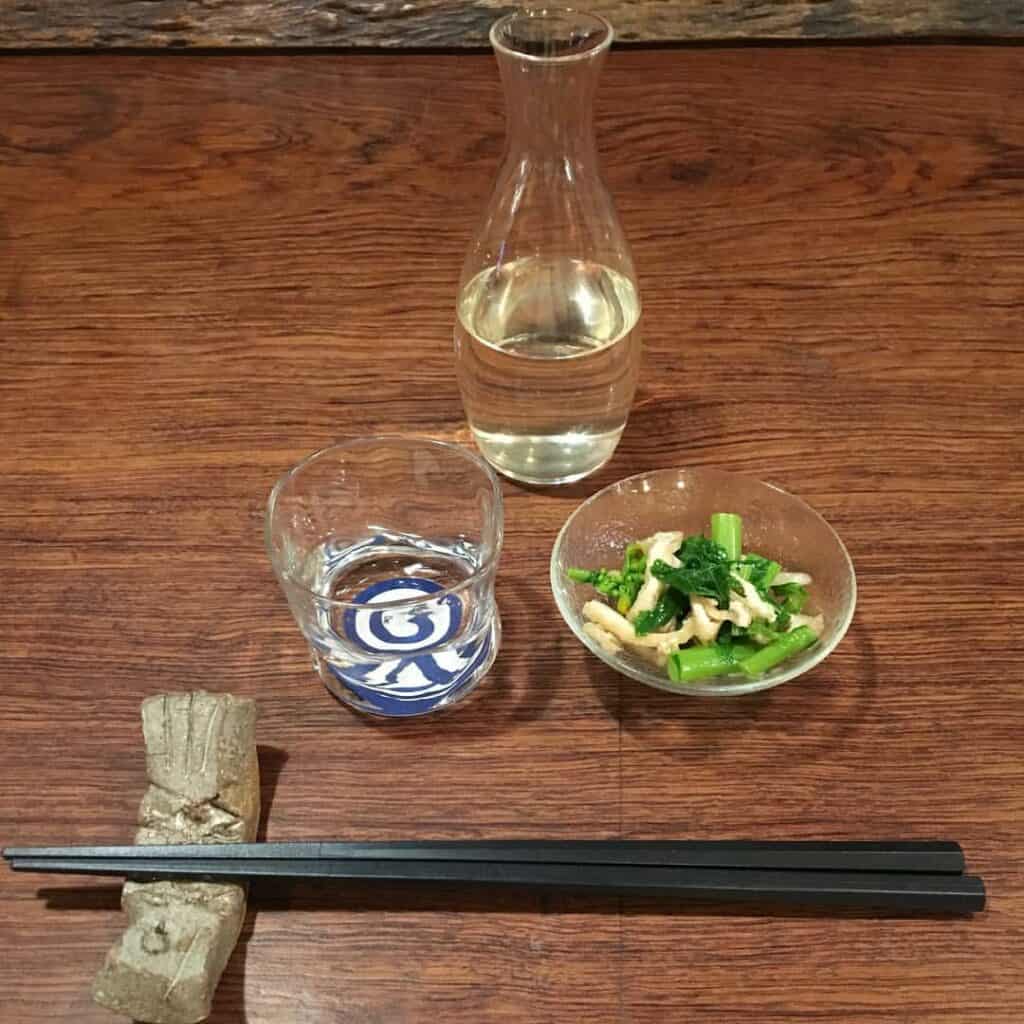

An Otoshi fee will be added to the bill and is a bit like a cover charge. In the U.S tipping is common to thank your waiter or waitress for their service. In Japan, tipping works differently and it is wise to understand the rules before you offend someone!
Why Are Your Served Otoshi If You Didn’t Ask For It?
Japan is known for its particular customs. Otoshi is a custom in many restaurants and gastro pubs that serve food and alcohol. To account for the delay between ordering and being served, otoshi is brought to the table to help tide you over.
It’s something small and light for the table to enjoy while their dishes are being prepared. Typically, you can expect something like edamame to be brought over or something from the appetizer menu. It started as a polite way for the kitchen to let you know your order had been received.
It has become a standard custom among pubs and bars over time. Otoshi will be added to your bill at the end. The otoshi fee helps the establishment recover costs from customers who stay a while nursing their drinks.
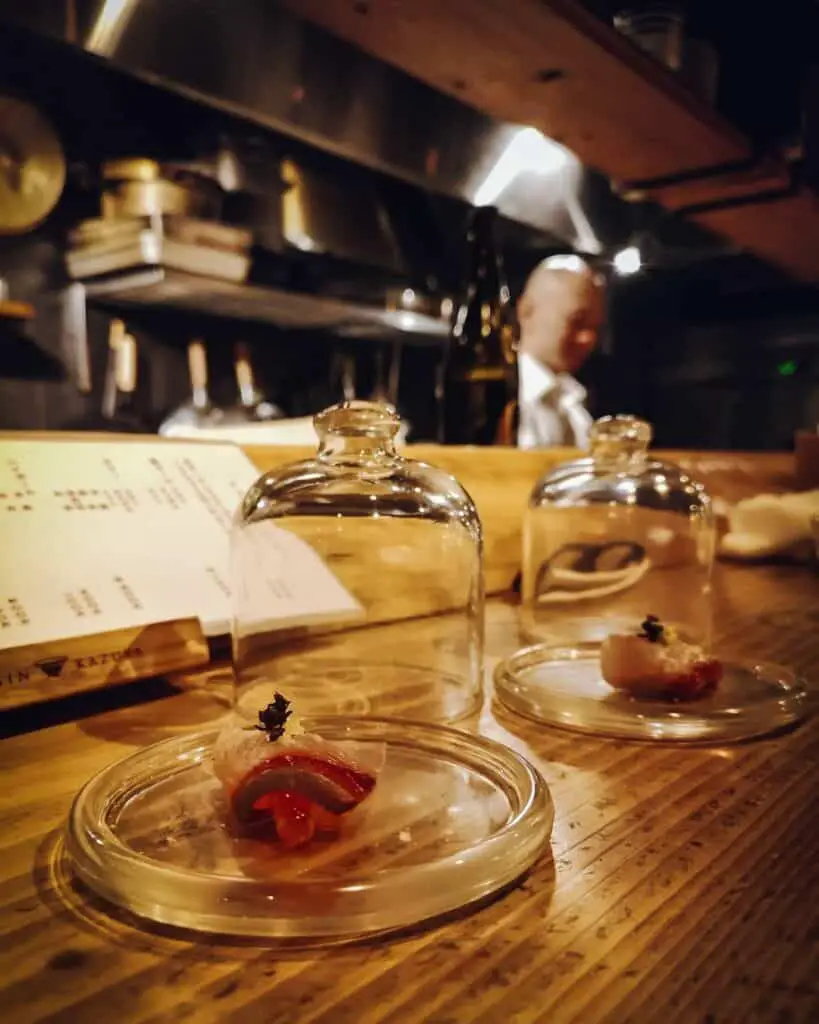
You can expect the otoshi fee to be quite small, but no more than 10% of your bill. You could consider this the Japanese version of a service charge. However, it’s more akin to the coperto service fee charged in Italy to cover the bread, oils, and condiments.
We all enjoy drinking and eating together but there can often be a time delay between the drinks arriving and the food. In Japan, otoshi is intended to whet your appetite in the meantime. The real benefit of offering otoshi is that customers have something to enjoy immediately.
Otoshi will be delivered to your tables before your appetizers even arrive. How many of us arrive at the restaurant already hungry? The otoshi is there for us when we need it most.
Being hungry can be quite painful sometimes, especially when you’re in a restaurant that smells delicious. There is no guarantee of how long your food will take. Sometimes all we can do is stare impatiently at the kitchen door.
In Japan, however, our needs have been catered to. A small dish is delivered with the drinks and we have something to sample. This helps to quell the hunger pangs and keep us sober a little longer.
Aside from the benefits to the customer, otoshi has added benefits to the restaurant. It’s an excellent way to share new dishes on the menu, or something a table might not have considered.
What Japanese Appetizers Will Be Served As Otoshi?
There’s no definitive answer from this as every restaurant or Izakaya treats otoshi differently. Some basic rules will be followed by all, such as, it will be a small dish. There will also more than likely only be one option per day for otoshi.
Sometimes it will be something from the appetizer menu but sometimes it can be something that is not on the menu at all. The dish on offer will change daily, a dish that can be prepared quickly for the customer.
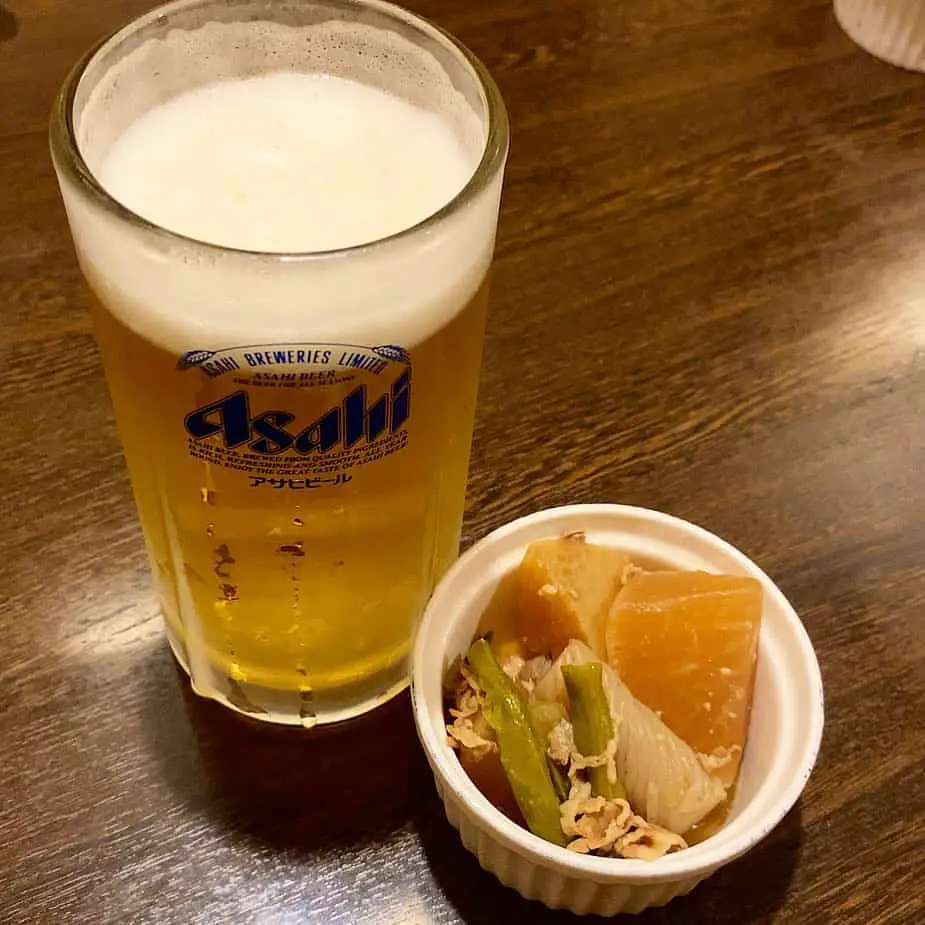
Here are some examples of what you can expect:
- Soup, like miso soup.
- Nimono, a dish of simmered meat or vegetables.
- Tsukemono, pickled dishes.
- Salads, traditional Japanese salads.
- Shiokara, fermented squid guts
This is by no means an exhaustive list but should display the variety you can expect from different Izakayas.
You might be looking at that list and thinking that’s not for me. It’s understandable, squid guts don’t sound very appetizing. It’s a delicacy that pairs well with liquor.
Not all otoshi is going to suit everyone. Fussy eaters and those with specific dietary requirements stand to lose out. Trying new foods is an adventurous and fun thing to do, however, and otoshi is a wonderful way to try.
Your server will bring otoshi to your table, it won’t be discussed, you won’t be told what it is. It’s just a part of the experience.
If you do want to know what the otoshi is before you order you can ask your waiter or waitress. They will be more than happy to let you know.
You can ask for no otoshi to be brought to your table, but once it has, it will be on your bill regardless of whether you eat it.
Can I Refuse Otoshi?
Well, yes you can, but you really shouldn’t. Inside of Japan, it would be highly unusual for someone to refuse otoshi. Typically, the cost is very low around 300-600 yen ($3-6) per person.
Japan is home to a very polite society and going against the grain is not very common. Otoshi is a compulsory appetizer served with your drinks because in Japan it is customary to eat while you drink.
When visiting another country you should try your best to adhere to the local rules and customs. That includes otoshi in Japan. If you do decide you don’t want it you can inform your waiter or waitress before they serve it.
You aren’t going to offend anyone if you decide not to eat the otoshi. It’s there for you if you want it, but if it is brought to your table you will be expected to pay for it. If you try and ask your waiter to remove the charge at the end of your meal because you didn’t eat it, they’ll have to refuse.
You must remember that the otoshi doubles as a table charge. You get a little something to eat while you wait, but if you decide not to eat it, you do still have to pay for it.
Otoshi is usually prepared on a daily basis with one item offered all day. What’s on offer also varies from place to place. It could be that what’s offered isn’t something you like.
You can’t really choose your otoshi. If it’s something you don’t like or doesn’t meet your dietary requirements, you’ll just have to grin and bear it. You won’t offend anyone by not eating it.
Can You Ask For More?
Absolutely you can! Asking for more of something is such a wonderful compliment to the chefs. It may not be all that common, after all, you do have a meal on the way.
If you do ask for more otoshi then you may have to pay an extra table charge, but this will vary between places. Some restaurants do offer free refills on certain items, such as miso soup.
If you like something and want some more just ask your server! Often, the otoshi will be something from the appetizer menu. There’s certainly no harm in asking for some more.
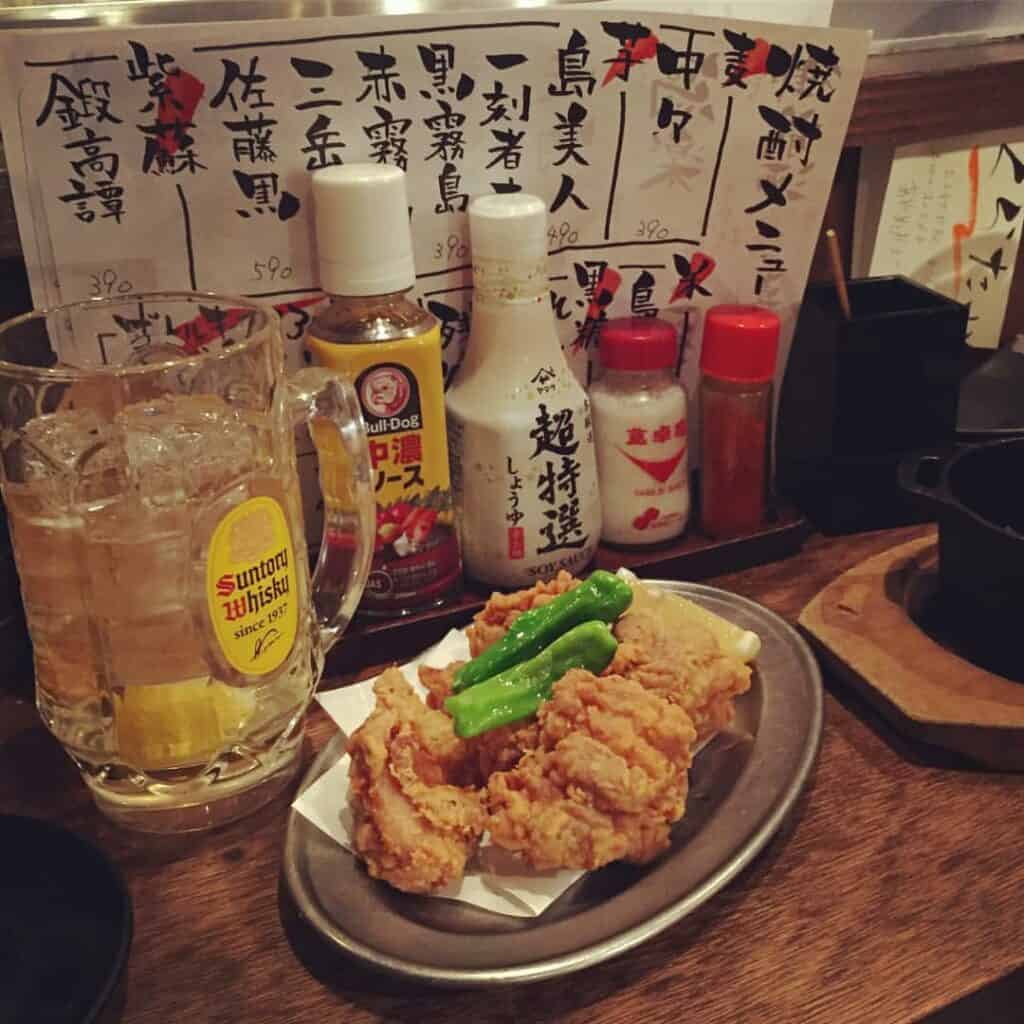
Perhaps it was a new dish you had never tried before or just something that really hit the spot. Otoshi is to be enjoyed. You can never have too much of a good thing!
What’s on offer as otoshi really does depend on where you are eating. Izakayas are primarily drinking establishments but the food is taken very seriously as well.
As well as these Japanese style pubs, otoshi is present in more traditional style restaurants as well. However, you would not find otoshi somewhere that sells fast food. Nor would a restaurant that specializes in fixed-price menus.
Izakayas are a wonderful place to dine in Japan. They’re bars or pubs, so you can expect to find delicious drinks available. Since food is such an integral part of the drinking experience in Japan, foodies will love Izakayas.
Usually, they will serve smaller plates, ideal for snacking on. Though each place is different and you can find some that specialize in fine dining as well.
When eating out at an Izakaya you should try lots of the different dishes on offer. Otoshi is a wonderfully warm introduction, especially if you’re already hungry.
What’s the Difference Between Otoshi and Tsukidashi?
Depending on where you are in Japan it could be named something different. For the majority of the country, otoshi will be the correct term.
This is what you would expect it to be called if you visit the Japanese capital of Tokyo. It would also be used throughout the Kantō region, including Chiba and Tochigi.
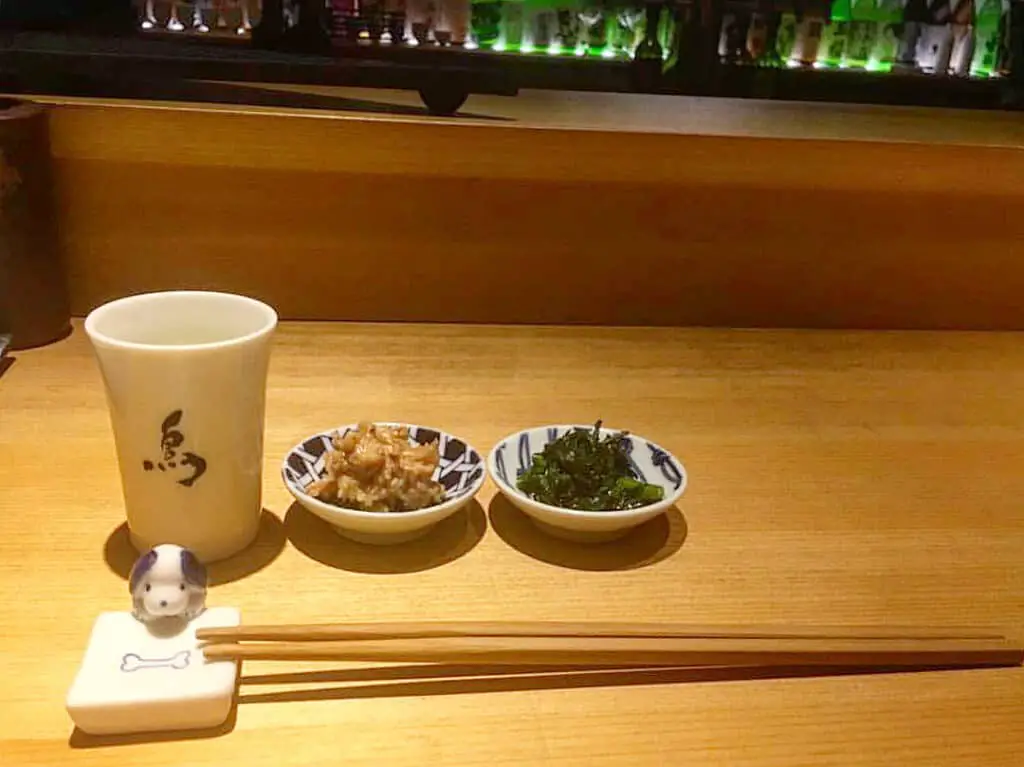
It would be referred to as otoshi throughout the areas north of the Kantō region as well. For most of Japan, this is what you would call it, and what you would see on your bill.
Heading further south on Honshu, Japan’s main island, in the Kansai region you may see it referred to as tsukidashi. Including Nagoya and Osaka, tsukidashi has the same principle as otoshi.
Tsukidashi is a welcome addition to your night, it is essentially the same thing as otoshi. A compulsory appetizer, typically a small dish, that will accompany your first round of drinks. A small charge will be added to your bill at the end of the night.
Otoshi and tsukidashi are two sides of the same coin. It just depends on which region of Japan you are in. Of course, with the advancement of the internet, TV shows, and films these cultural differences are broken down.
Roughly speaking otoshi would be commonplace in the north of Japan, and tsukidashi more common in the south. However, it’s likely your server would understand if you spoke the wrong one.
Should I Tip As Well?
The last thing we want to do is offend someone. Tipping varies around the world so it’s always best to research before you travel. In the U.S a 15% tip is common, in the U.K tipping is not compulsory but always appreciated.
In Japan, typically speaking, it’s not expected for you to tip at a restaurant. In fact, you might risk offending someone if you do. The Japanese culture is one that values dignity, hard work, and respect. Good service is offered as a standard and therefore tips aren’t required.
The best way you can show your appreciation to your waiter or waitress is to treat them with respect. Thank them at the end of your service and don’t leave a mess (this isn’t a Japanese thing, it’s just good manners).
It may seem unusual not to leave a tip but it is best to fight that instinct. If you do decide to tip then your server will most likely refuse. Save everyone the trouble by saying arigato (thank you) and leaving.
In Japan, they believe that the price you are already paying for your meal includes good service. Unlike waiters/waitresses in America who rely on tips due to low wages, Japanese waiters are paid a more reasonable wage.
Otoshi helps to bridge the cultural difference. Along with getting a tasty morsel to eat when you arrive, this charge can serve as your tip. Instead of a tip directly to the server, it is a tip for the establishment.
Japanese Eating Etiquette
So rich is the culture of Japan that we can all benefit from understanding more about the etiquette expected. Steeped in traditional history, the polite people of Japan, abide by very specific social rules.
So we’ve covered everything there is to otoshi, there are a few more things to bear in mind when eating in Japan.
It is customary in Japan to eat with chopsticks, there can be a steep learning curve for those from western cultures. But once you get the hang of it, it becomes second nature.
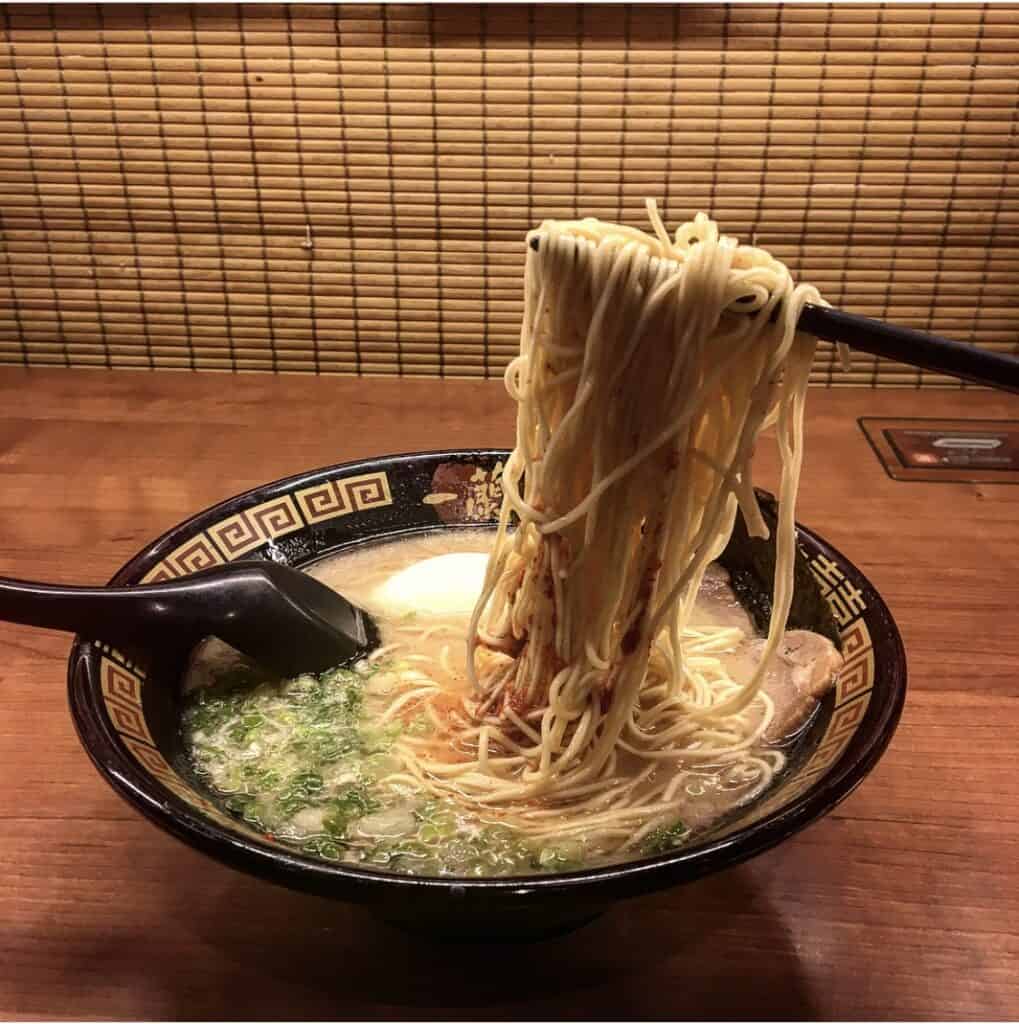
With that mind, it is considered poor form to rest your chopsticks on your bowl. Instead, use the designated chopstick rest, or the wrapper they came in.
Chopsticks should be used when you have your soup. The solid items in the soup should be eaten with chopsticks. Once you just have the liquid left, raise the bowl to your mouth and drink.
If you are sharing dishes, as would be common in Izakayas, it is polite to move food with the opposite ends of your chopsticks. Or a dedicated pair.
If food should fall from your mouth, your impulse might be to catch it. This is considered very bad manners in Japan. If your food falls, let it fall.
When eating noodles, slurping is a sign of appreciation. It shows how much you are enjoying your meal. It also has a practical purpose, cooking the noodles down!
When you arrive at the restaurant your server will bring you wet towels, these are for cleaning your hands before you eat.
If you are eating from a small bowl you should pick it up and have it close to your mouth while eating. This does not apply to larger dishes.
You should also make every effort to clear your plate. It is considered rude to leave food behind. This applies to both restaurant food and within the home.
Japan is a country that values food, so any food waste would be disappointing and upsetting. If you are visiting Japan, make every effort to finish what’s on your plate. If there is something you don’t like, offer it to the people on your table.
It is okay to start eating before everyone’s meal has arrived, although still polite to wait, particularly true for dishes better off eaten right away.
Japanese Drinking Etiquette
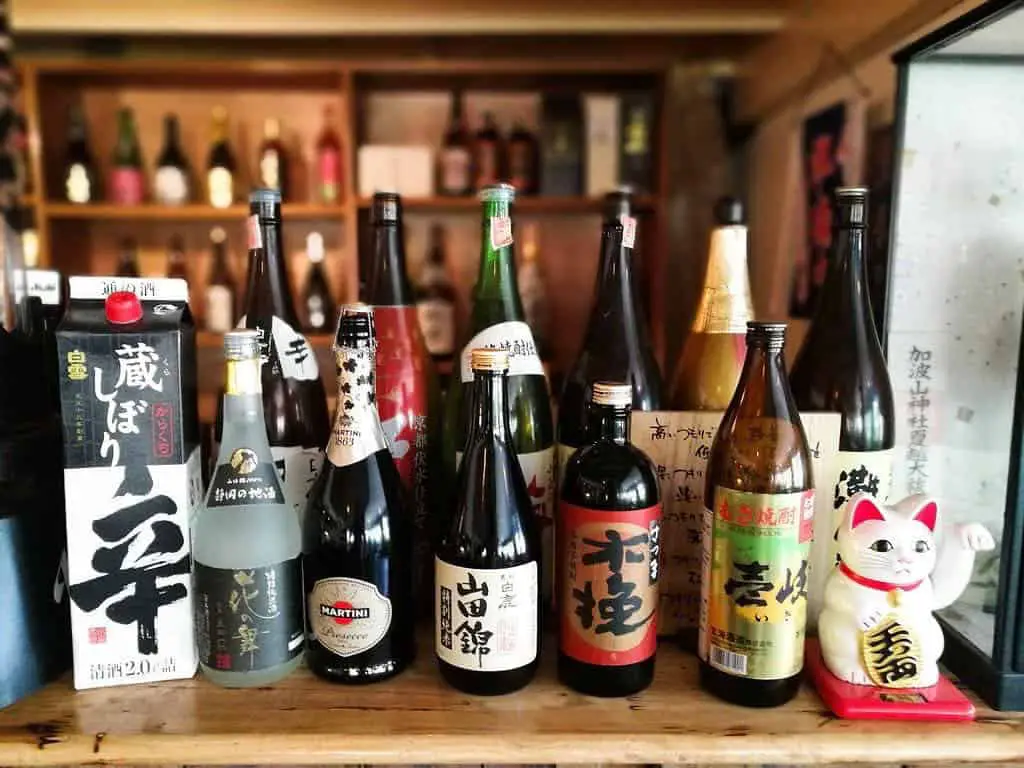
In contrast, it is impolite to start drinking before your whole party’s drinks have arrived. It would be considered bad manners to get obviously drunk in fine dining restaurants.
Izakayas, on the other hand, are primarily for drinking, still, you should not get so drunk that you become a nuisance to other guests.
In Japan, it is customary to refill your friends’ drinks if they are getting low. Likewise, you shouldn’t pour your own drink, let one of your friends have the honor.
If you don’t drink alcohol then you don’t need to feel left out. There should be plenty of non-alcoholic options available. From tea, juices, soft drinks to non-alcoholic beef, everyone is catered for.
In a culture that places tremendous value in their social protocols, drinking is where people can let loose. The main thing to remember about drinking in Japan is that you should never drink alone, cut loose, and help others do the same.
Beer has become the standard drink for social occasions in Japan, although sake is still very popular. It’s important to always say cheers with your group.
The best way to do this is by saying kanpai! Be enthusiastic when you do.
While there is a lot to remember about etiquette in Japan, just remember to always be respectful, polite, and always say kanpai!
